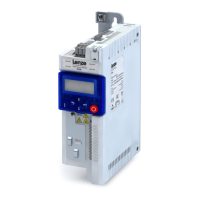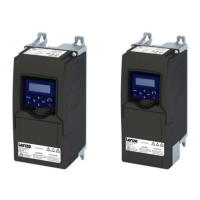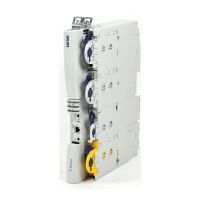6 Function & parameter description
Group 3 – Motor control
60 Lenze · Inverter i510 / i550 - Cabinet · Operation Manual · 0.4 EN · 02/2016
6.5.3 V/f: Slip compensation
In a standard AC induction motor, the shaft speed decreases as load increases, and increases as load decreases.
Slip compensation is used to counteract changes in motor speed (slip) caused by changes in load.
1. Setup the following motor parameter.
(Out of this parameters the inverter automatically calculates the nominal slip)
P320:4 Motor parameter: Rated speed
P320:5 Motor parameter: Rated frequency
2. Setup the slip influence gain
100% means that full motor rated slip is applied with full torque. If the slip compensation is not accurate (Exam-
ple: Motor data not accurate) the slip compensation can be adjusted with this value.
-200.00 ... [100.00] ... 200.00 %
Configuration of the slip compensation influence.
100% means that full motor rated slip is applied with full torque.
Configuration of the slip compensation filter time.
The default is optimized for best slip speed loss recovery time perfor-
mance of typical motors. If oscillation or instability occurs at full load (or
near full load) then increasing the Slip Compensation Filter Time is rec-
ommended.
6.5.4 V/f: Frequency boost
The voltage boost (Fixed or during Acceleration) can increase the starting torque for application with high inertia
load, high friction loads.
0.0 ... [Type Code dependent] ... 20.0
%
The Fixed voltage boost increases the output voltage with the configured
% of Base Voltage (P303:1)
The Acceleration voltage boost increases the output voltage during ac-
celeration in with the configured [%] of Base Voltage (P303:1)
6.5.5 V/f: Oscillation damping
The oscillation damping function is used to reduce speed oscillations which can occur in unloaded or lightly load-
ed operation.
See Easy starter for setup and more information
6.5.6 V/f: Override point of field weakening
See Easy starter for setup and more information

